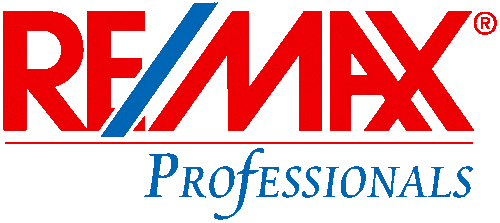Source: http://www.westerninvestor.com/news/alberta/2018-housing-outlook-mixed-for-prairie-market-1.23105838
The short-term future of the residential sector in the Prairies is a tale of four cities – slow and steady in Winnipeg, a reversal of a two-year slide in Calgary and Edmonton and another year of declines in Saskatoon.
Though GDP growth, employment and immigration fundamentals are slowly improving, industry players aren’t getting too far ahead of themselves. Caution is the word of the day.
Or if you live in Winnipeg, it’s boring, but in a good way.
Winnipeg
Winnipeg’s resale housing market has experienced 18 consecutive years of price increases and there’s a very good chance this year will break 2016’s record-setting performance, said Peter Squire, residential market analyst for the Winnipeg Realtors Association. “We’re like a GIC. We keep moving along, self-assured,” he said.
Lai Sing Louie, Calgary-based regional economist for Canada Mortgage and Housing Corp. (CMHC), said there’s nothing wrong with boring in real estate. Winnipeg’s apartment vacancy rates have been unwavering in the 3 per cent range, rents have increased and home resale prices have been rising steadily, if not spectacularly.
“I can’t remember the last time prices decreased in Winnipeg. It’s been decades,” Louie said, adding CMHC believes prices will rise about 2 per cent annually in 2017 and 2018, remaining close to the $285,000 level.
The seemingly never-ending conversion of heritage buildings into condominiums, and the new condo buildings emerging on the city’s skyline, are luring unprecedented numbers of people into Winnipeg’s downtown. Over the last five years, the number of downtown residents has grown by 7 per cent to nearly 17,000.
Dollar volumes through 10 months of this year have already exceeded last year’s totals, and Squire believes the outlook contains further good news.
“Our unemployment rate and job creation are among the best in the country. It’s a combination of jobs plus affordability [of homes]. Plus, there’s more security on the job side because our economy is so diversified. We don’t see huge layoffs in any one industry. A diversified economy – government, manufacturing, financial services, aerospace and food processing – helps instil consumer confidence,” Louie said.
Manitoba’s provincial nominee program – which facilitates immigration of skilled tradespeople and business people from all over the world – has been a “huge” factor in boosting the population, which also helps drive the housing market. At last count, more than 130,000 people have found new lives in Manitoba over the last decade.
“We’ve also seen some people who had moved to Alberta and Saskatchewan come back to Manitoba, which has also helped,” Squire said.
Edmonton
With an expected 10 per cent increase in home sales this year, Edmonton qualifies as the hottest market on the Prairies. About 18,800 homes are forecast to change hands in 2017, up from 16,990 last year. Yet despite these
relatively lofty projections, Louie said the city isn’t out of the woods yet.
“It’s a strong rebound but a lot of people are worried about their jobs. They’re still coming out of the recession in Alberta. They’re getting growth but it’s from a low level,” he said.
The number of new listings in Edmonton has increased along with improving sales, reaching levels not seen since 2008. Resale home prices were up 3.5 per cent on a year-over-year basis through the fall, but CMHC attributes much of this to the sale of a large proportion of homes at the higher end of the spectrum.
One significant challenge for the city’s housing sector is the increasing number of people moving out of the city to other provinces.
“Traditionally Alberta gains people from other parts of Canada but due to the difficult job environment, it’s slowing the number of people coming to Edmonton. But our sense is the worst is over and markets in Alberta are going to start to firm up over the next two years,” Louie said.
Calgary
Calgary is still reeling from the downturn in the oil and gas sector a couple of years ago. With less job security and lower income came fewer house sales.
“Oil prices dropping was a punishing blow to the [housing] market,” Louie said. Housing sales plunged 29 per cent in a single year, he noted.
As the economy starts to creep back, housing sales are forecast to increase by 6 per cent in 2018. It’s all a far cry from 2006, when house prices in Calgary skyrocketed 38 per cent.
“We expect prices to rise in 2019 but in the low single-digit range. We won’t be seeing the days when prices were going up by more than 30 per cent,” he said.
White-collar job creation is crucial to kick-starting Calgary’s home sales, and the faster office space in the city fills up, the quicker the housing market will pick up, he said.
“Office vacancy rates are still about 25 to 30 per cent. One in four buildings is empty,” Louie said.
Saskatoon
The oil and gas sector slump has also dragged down Saskatoon’s market, which was exacerbated when potash and uranium values also declined.
Saskatoon has now slipped into a buyer’s-market . There’s more supply than demand so it’s putting some downward pressure on price. CMHC is now expecting a 2 per cent drop in average home prices this year.
There are signs that the job market is improving and the province’s economy is starting to expand again, so Louie expects a slow transition to more balanced market conditions next year.
“There won’t be a lot of upward price pressure. We predict prices will stabilize. We’re looking at flat price growth next year,” he said.
Projected sharp gains in population will boost demand for rental properties over the next two years,but the addition of more than 630 apartments during the past 15 months may mean the vacancy rate would drop only slightly and remain near current highs of about 10 per cent. A decade ago, the vacancy rate was below 1 per cent.
The provincial forecasts could all be thrown out of whack with another shock to the economy, analysts warn.
Louie said perhaps the biggest wild-card is the U.S. Trump administration threat to scuttle the North American Free Trade Agreement. That would have serious repercussions right across the Prairies.














